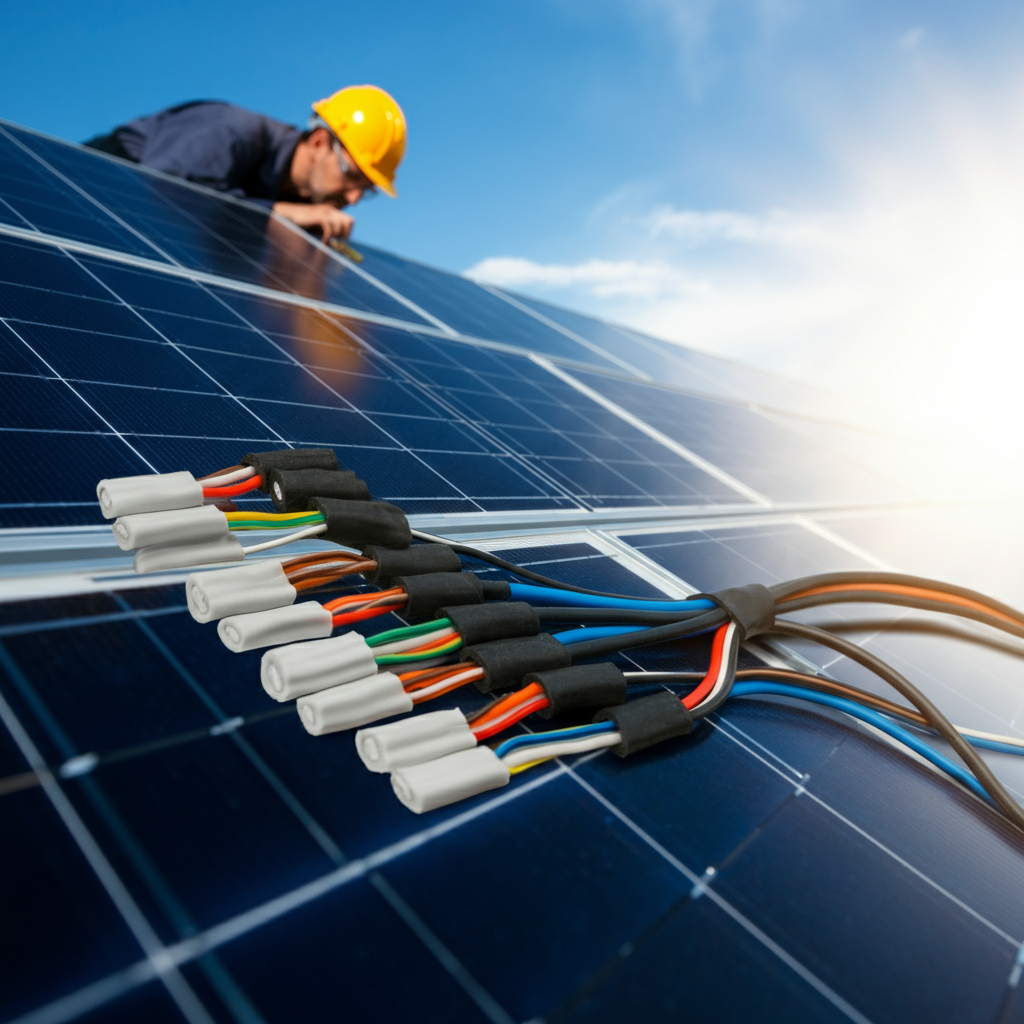Solar panels are only as productive as the wires powering their connection. Both novice and veteran solar energy technicians benefit from deeply understanding the intricacies of solar panel circuitry. Choosing incorrectly can lead to wasted energy, safety hazards, and even entire system failures.
This guide walks technicians through every essential aspect of solar panel wiring—from identifying which wire types suit diverse systems best to maintenance methods ensuring performance longevity. Additionally, we’ll spotlight how Soltro wires establish the gold standard for solar installations.
Grasping the Fundamentals of Solar Panel Circuitry
Solar panel wires play an unseen yet pivotal role ferrying the electricity captured by panels so it may be applied, stored, or fed into the grid. Selecting the proper wire matters not just for maximizing output but also for protecting the system’s safety and life.
Poorly chosen or installed wires risk overheating, voltage reduction, and inefficiencies. In a worst case, they could cause costly harm to the whole system.
Types of Solar Panel Wires
Solar panel wires don’t have a one-size-fits-all solution. Distinct projects demand distinct wire types. Below outlines the most common categories and their uses.
PV Wire
- Use: Connecting solar panels together (often called series wiring).
- Features: UV-resistant sheathing, designed for outdoor use and high-voltage tolerance.
- Example: Soltro PV Wire is widely chosen for its robust weatherproofing and adaptability across temperature ranges.
THHN Wire
- Use: Commonly employed for indoor circuitry when wires from solar panels enter a home or electrical box.
- Key Features: Lightweight, cost-effective, and versatile though not suited for all outdoor applications. THHN wires lack UV resistance necessitating enclosed runs or conduits for lasting performance.
USE-2 Wire
USE-2 Wire proves a heavy-duty grounding option for solar while excelling in buried uses. A comparative evaluation displayed USE-2 wires outperforming standard PV wires underground.
Aluminum vs. Copper Wires
While copper holds sway due to unparalleled conductivity, aluminum stands as a financially prudent selection for extensive installations. However, its diminished flexibility demands fasteners and installation practices be stringently adhered to given aluminum’s less malleable composition.
How to Choose the Right Solar Panel Wire
Right solar panel wire choice involves assessing numerous factors. Here are highlights to inspect:
Wire Gauge
Appropriate gauge prevents energy waste from needless resistance. For instance, a 10-gauge wire suffices modest residential systems but larger industrial setups may necessitate thicker 6-gauge or higher gauges to optimize efficiency. Conversely, undersizing courted inefficiency as one client discovered when a 12-gauge wire instigated a 15% output reduction in their high-voltage system, compelling expensive reworking.
Weather Resistance
Weatherproofing proves pivotal for outside runs as wires must stand up to sun, rain, and temperature variations. Reliably, soltroxide protected wires like Soltro PV Wires avert premature breakdowns from cracking or degeneration outside over extended usage.
Voltage Capacity
Be certain the wire aligns with voltage outputs. Residential panels typically generate within 12V and 48V while commercial panels often involve 600V or higher, necessitatingVoltage capacity suitable for tasks.
Connecting Photovoltaic Panel Leads: A Step-by-Step Manual
Proper linkages ensure risk-free and efficient energy transmission. Follow these steps to wire your solar arrays correctly.
Step 1 Map Your Arrangement
Determine the positioning of your photovoltaic panels and trace the route for cabling back to the converter or accumulator station. Blueprint it out to guarantee minimal wire use and lessened energy loss.
Step 2 Connect Solar Panels in Series or Parallel
Series linking heightens voltage while keeping current constant. Ideal for higher-performance interconnections. Parallel linking keeps voltage steady but magnifies current, necessitating thicker conductors.
Step 3 Employ MC4 Connectors
MC4 connectors facilitate wire installation and ensure a watertight and stable interconnection. Continually check linkages to confirm polarity alignment.
Step 4 Connect to the Charge Regulator
Route your conductors to the charge controller, making sure to match the “+” and “-” terminals.
Step 5 Secure the Cabling
Use cable ties, conduits, or clips to maintain wires organized and shielded against wind and environmental wear.
Maintenance and Safety Tips for Solar Panel Leads
Keeping your photovoltaic panel conductors in top shape is key to prolonged system efficiency and safety.
- Inspect Routinely for signs of damage, including unraveling, cracking, or discoloration.
- Clean Connectors to prevent corrosion that can disrupt current flow.
- Protect Against Wildlife: Install conduits or protective casings to prevent harm from birds or rodents.
- Use Quality Products like Soltro wires to ensure durability and dependable performance.
Real-Life Scenario
A solar farm avoided a major system failure by catching a damaged connector during a routine inspection. Fixing the issue instantly saved significant downtime and repairs.
Troubleshooting Common Issues with Solar Panel Leads
Despite best practices, issues can still arise. Here are some frequent problems and how to solve them.
Voltage Drop
- Cause: An undersized or excessive wire run can cause excessive resistance and power loss.
- Solution: Upgrade to thicker gauge wire suited for the circuit length or shorten the run to comply withcode.
Corrosion
- Cause: Exposure to environmental elements like moisture, salt or chemicals can degrade connections over time.
- Solution: Use corrosion-resistant connectors and conduct routine inspections and maintenance to catch any issues early.
Overheating
- Cause: Carrying too much current load or inadequate ventilation in enclosed spaces allows temperatures to rise dangerously.
- Solution: Verify wire sizing meets or exceeds load requirements and provide openings to allow for airflow to safely dissipate heat.
Ensuring Optimal Solar Through Proper Installation
There are various factors to consider when setting up a solar energy system to deliver peak performance for years on end. Taking the time to carefully select high-quality, durable wires matched to the project scope and grounding them correctly is key.
Routine inspectionscan detect potential problems before they disrupt operation or pose safety hazards. Choosing a reputable supplier like Soltro ensures highly rated components for residential or commercial installations that deliver clean, reliable power.
Contact their experts today to discuss a customized solution for your next solar project and help ensure it exceeds expectations for the long haul.
